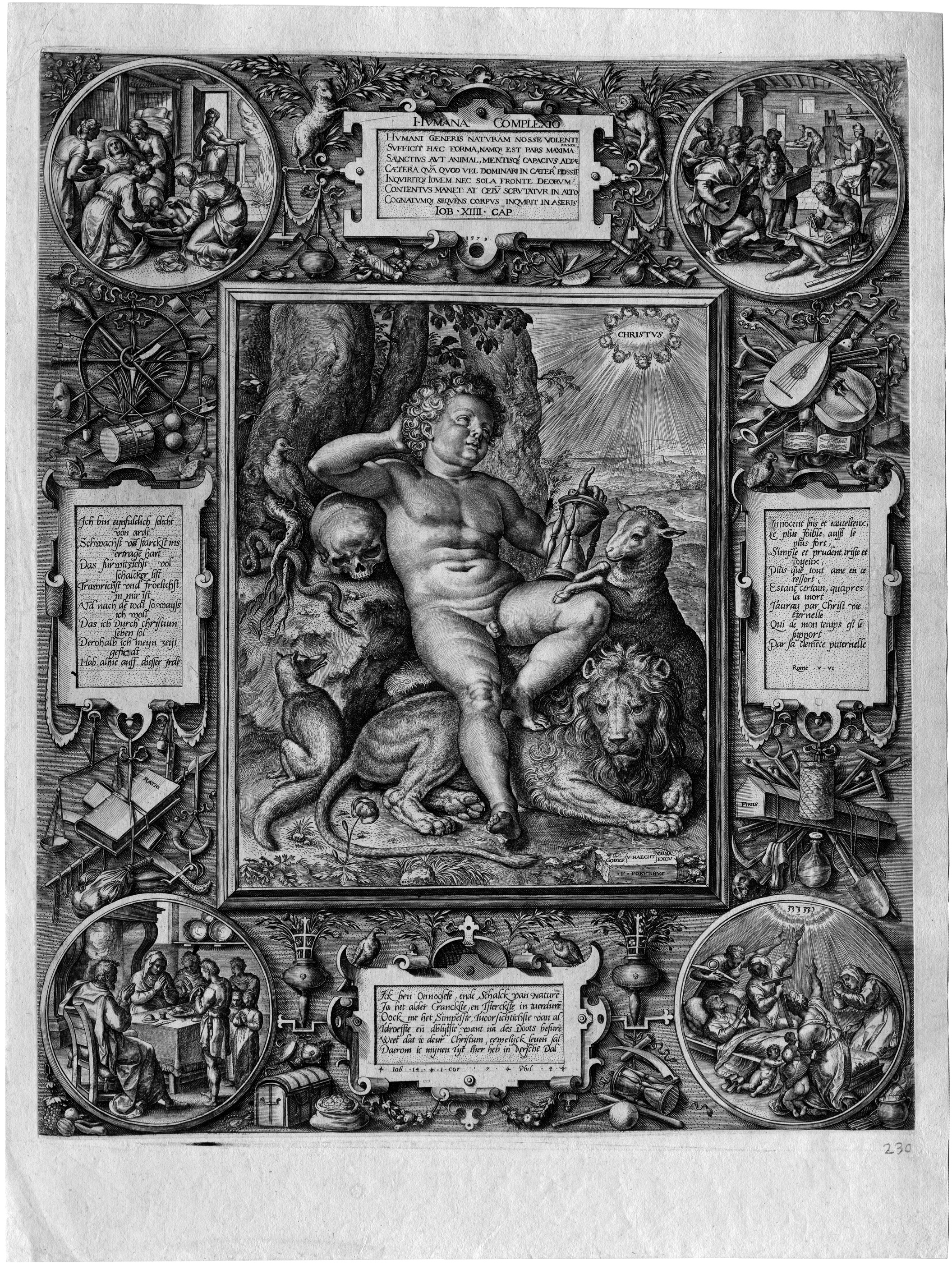Loading the page ...
Johannes Wierix
(1549 Antwerp – circa 1620 Brussels)
Humana Complexio (Allegory of Human Life). Engraving after Frans Pourbus. 42.9 x 34.6 cm. 1579. Mauquoy-Hendrickx 1555 II; The New Hollstein 1841 II.
Johannes Wierix’ precocious talent emerged early. While still a young man he engraved deceptive copies of the principal works of Albrecht Dürer, whose technically sophisticated engraving style was to exert a defining influence on him for the rest of his life. The present large, iconographically complex allegory is a splendid example of Johannes’ artistic skills and one of his most eminent printmaking achievements. The central scene is based on an invention by Frans Pourbus, whereas the entire iconographical programme and the verses in Latin, Dutch, French and German are by Willem and Godefridus van Haecht, who also published the print. The opulently arranged allegory is a monument to Christian humanist scholarship at the time of the Counter-Reformation. The work centres around a naked boy, at whose feet lies a lion as the personification of strength and protection against evil. The boy’s right arm rests on a skull, while in his left hand he holds an hourglass symbolising the finite nature of human existence. His raised index finger points to a medallion with the name of Christ. The flanking verses refer to the duality of human nature. Born innocent children, human beings are nonetheless slaves to evil. Only fear of God can bring redemption. The middle ground is surrounded by
a rich ornamental frame, at the corners of which are placed medallions with the four ages of man. The innumerable attributes rendered with loving meticulousness supply manifest references to this theme. We see a hobby horse, a drum and other children’s toys as well as attributes of the arts, science and economic prosperity, which symbolise the striving of youth and the steadfastness of maturity. An arrangement consisting of a coffin, spade, human bones and a skull points to the inevitable end.
The miniaturist delicacy of the engraving technique and the stupendous wealth of detail in this allegory make the present print an eminent work of art and an exquisite example of Flemish printmaking in the late 16th century. A superb, crisp and contrasting impression with even margins. The engraving is rare and only a few impressions have survived. The New Hollstein mentions impressions in Amsterdam, Brussels, Munich, Paris, Rotterdam, Vienna and Wolfegg. However, some of the recorded impressions are trimmed or incomplete. Minor ageing, otherwise in excellent condition.
